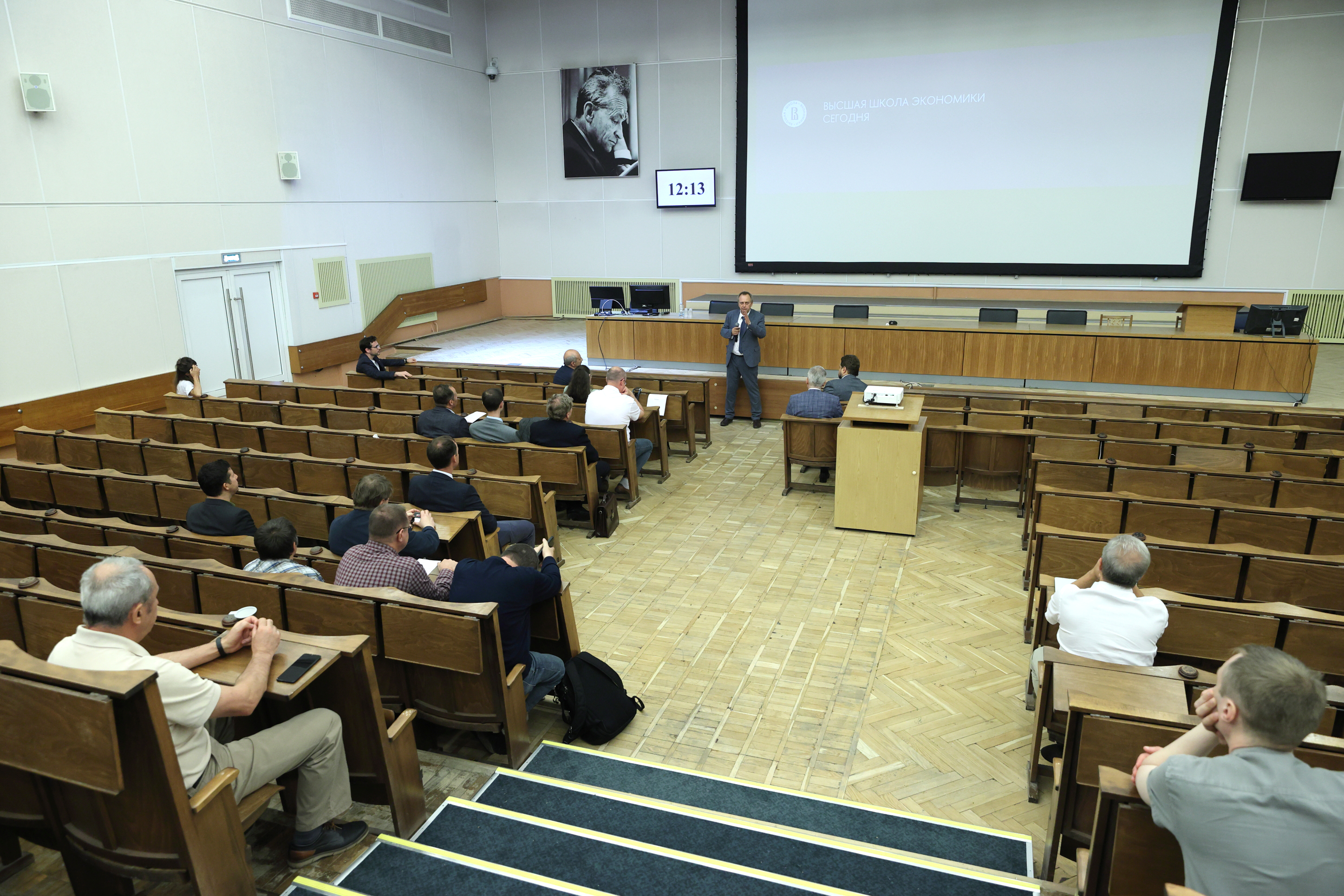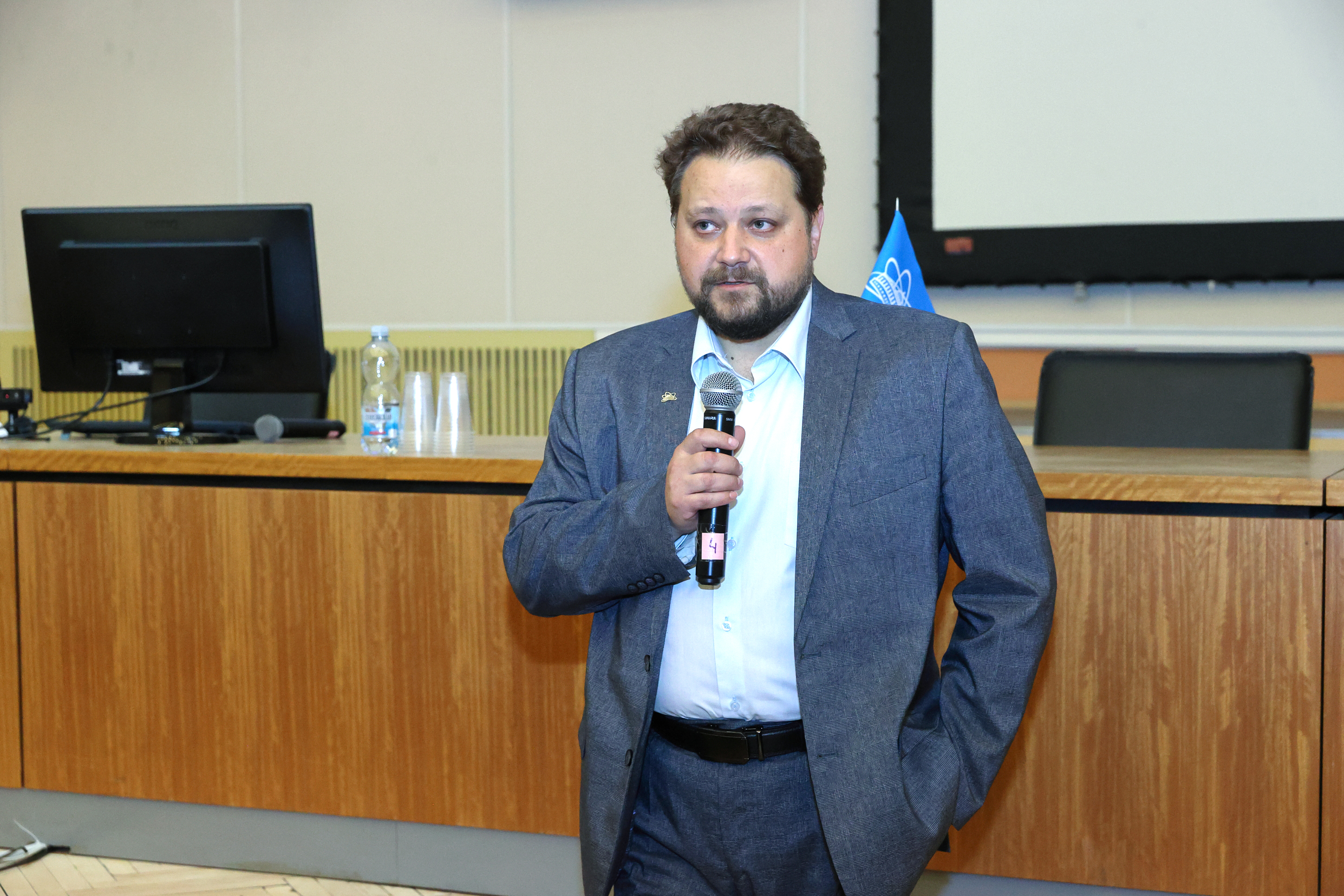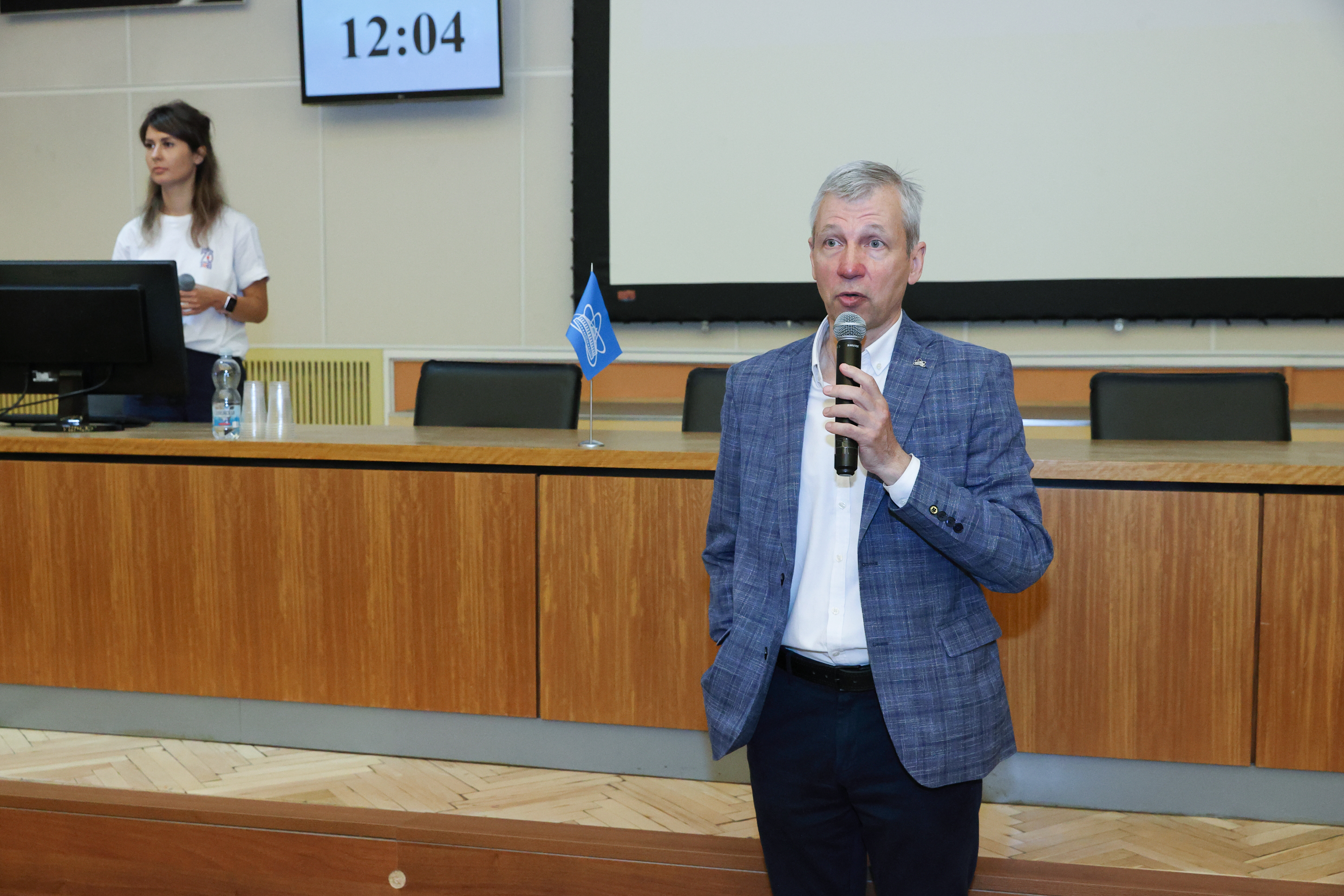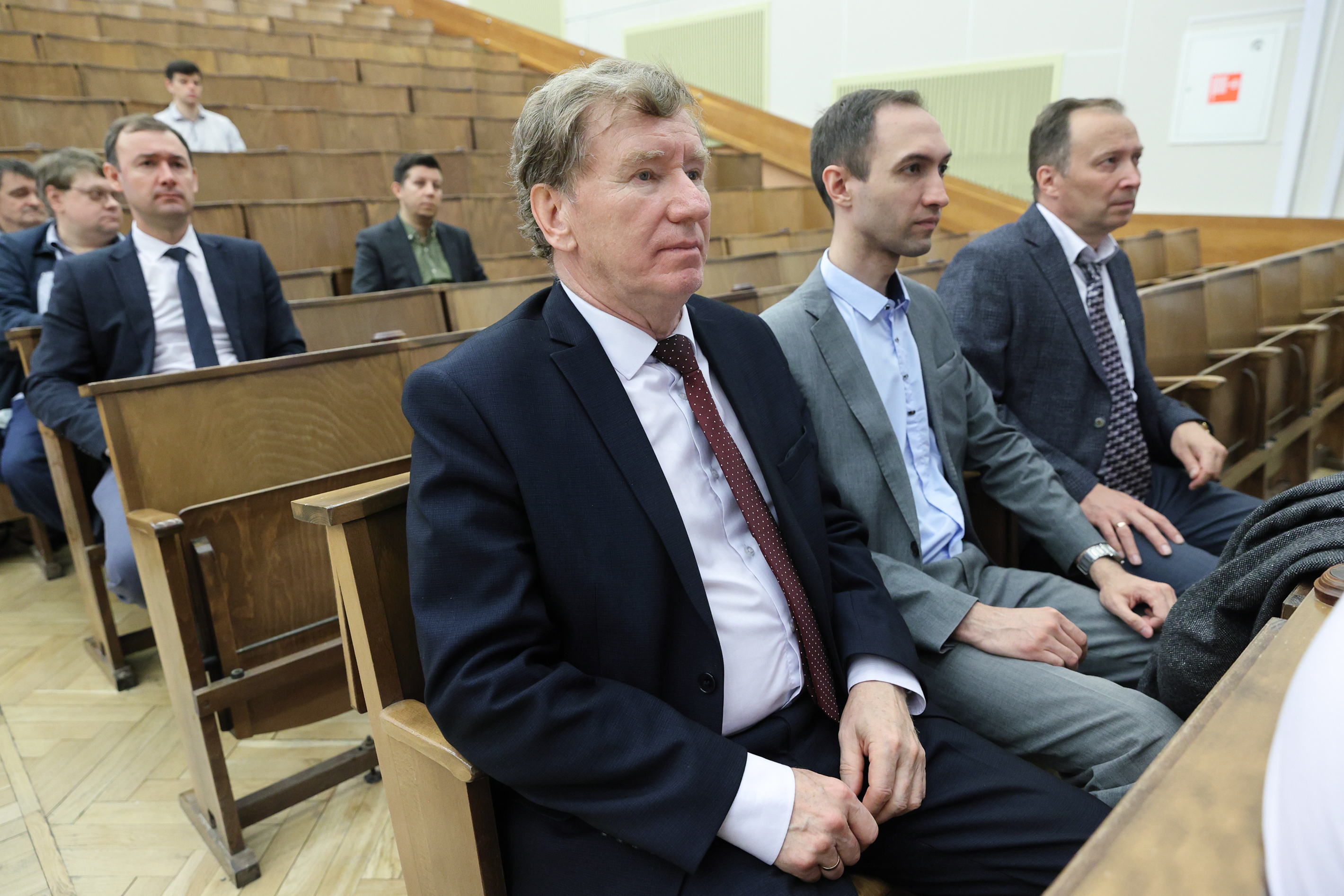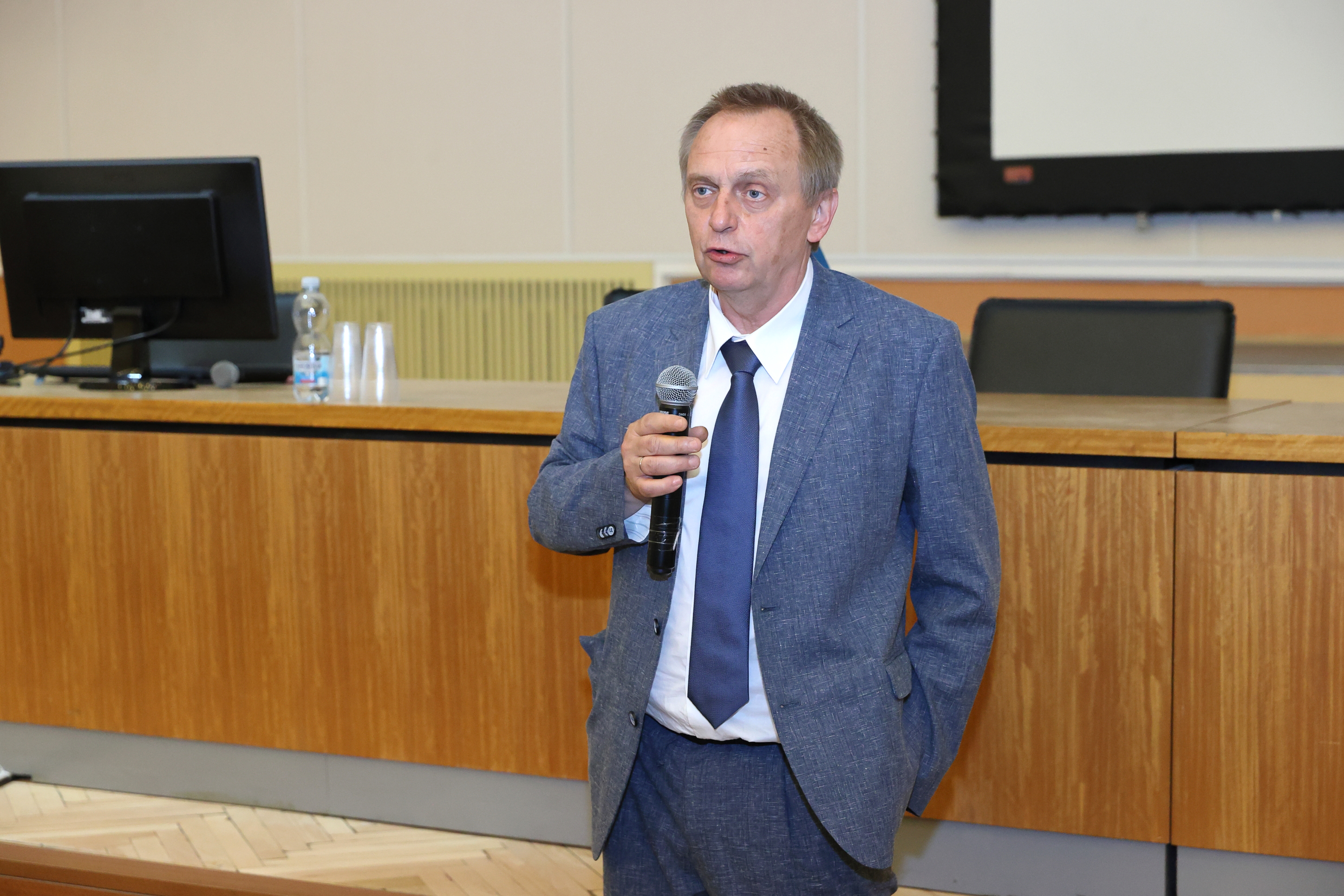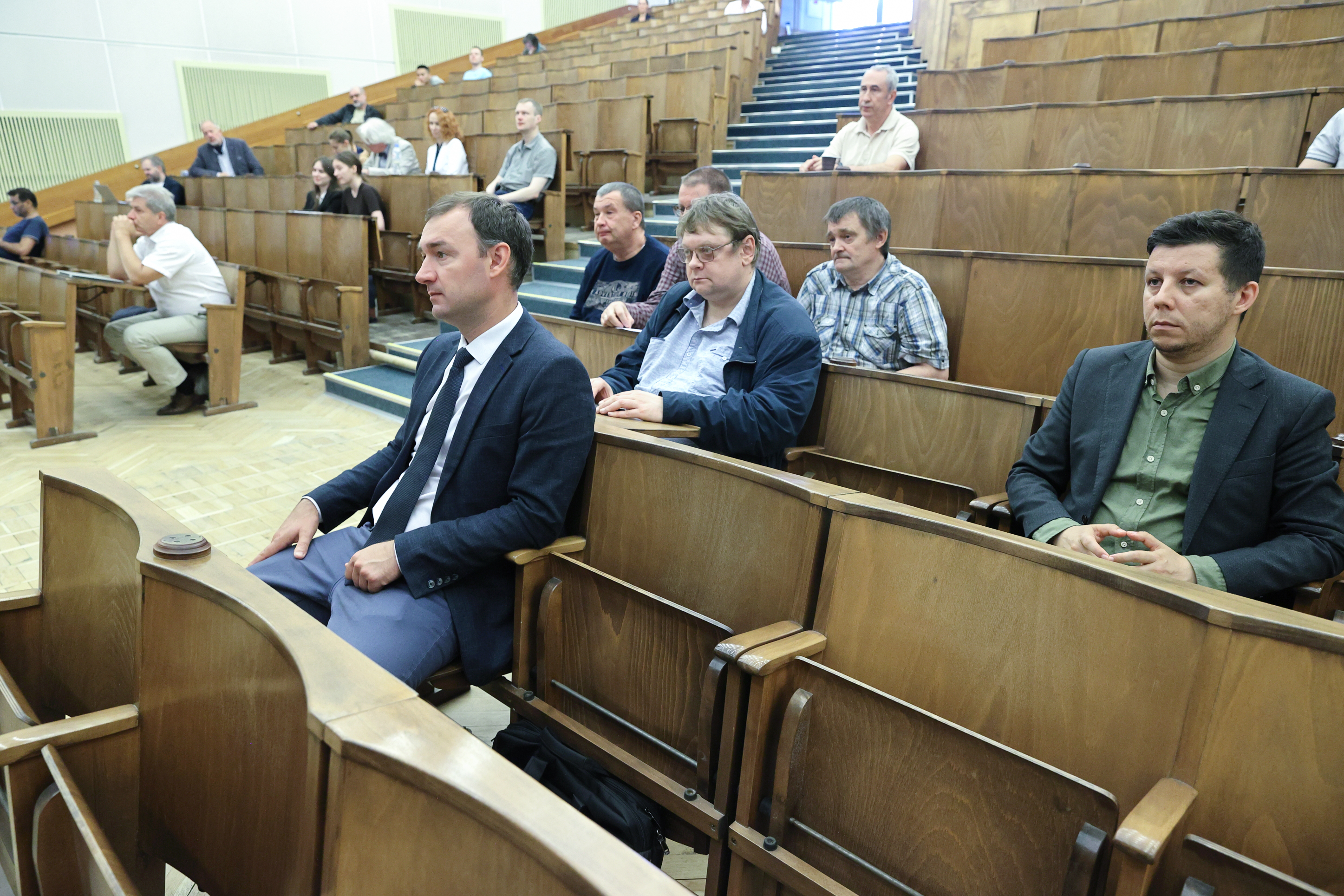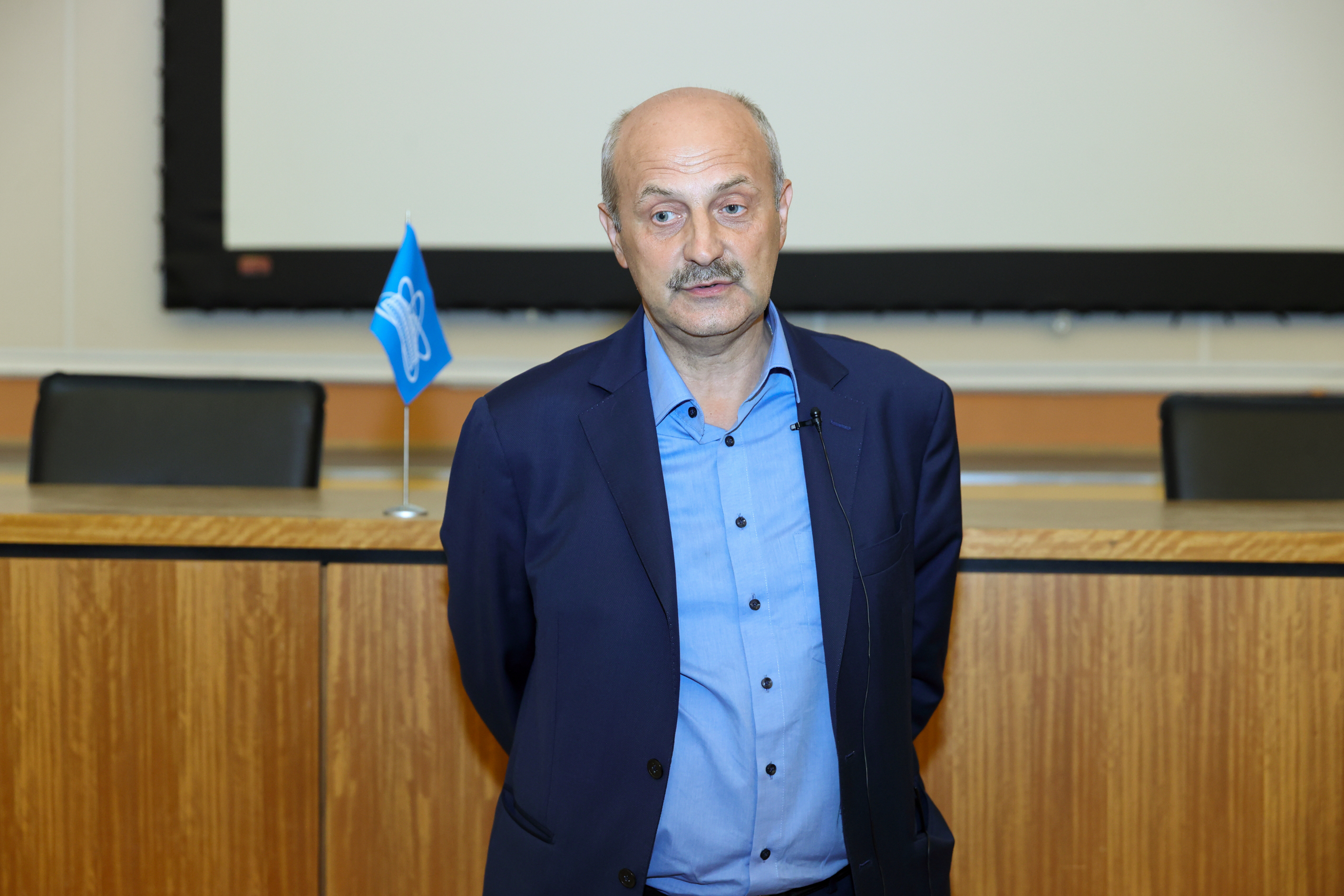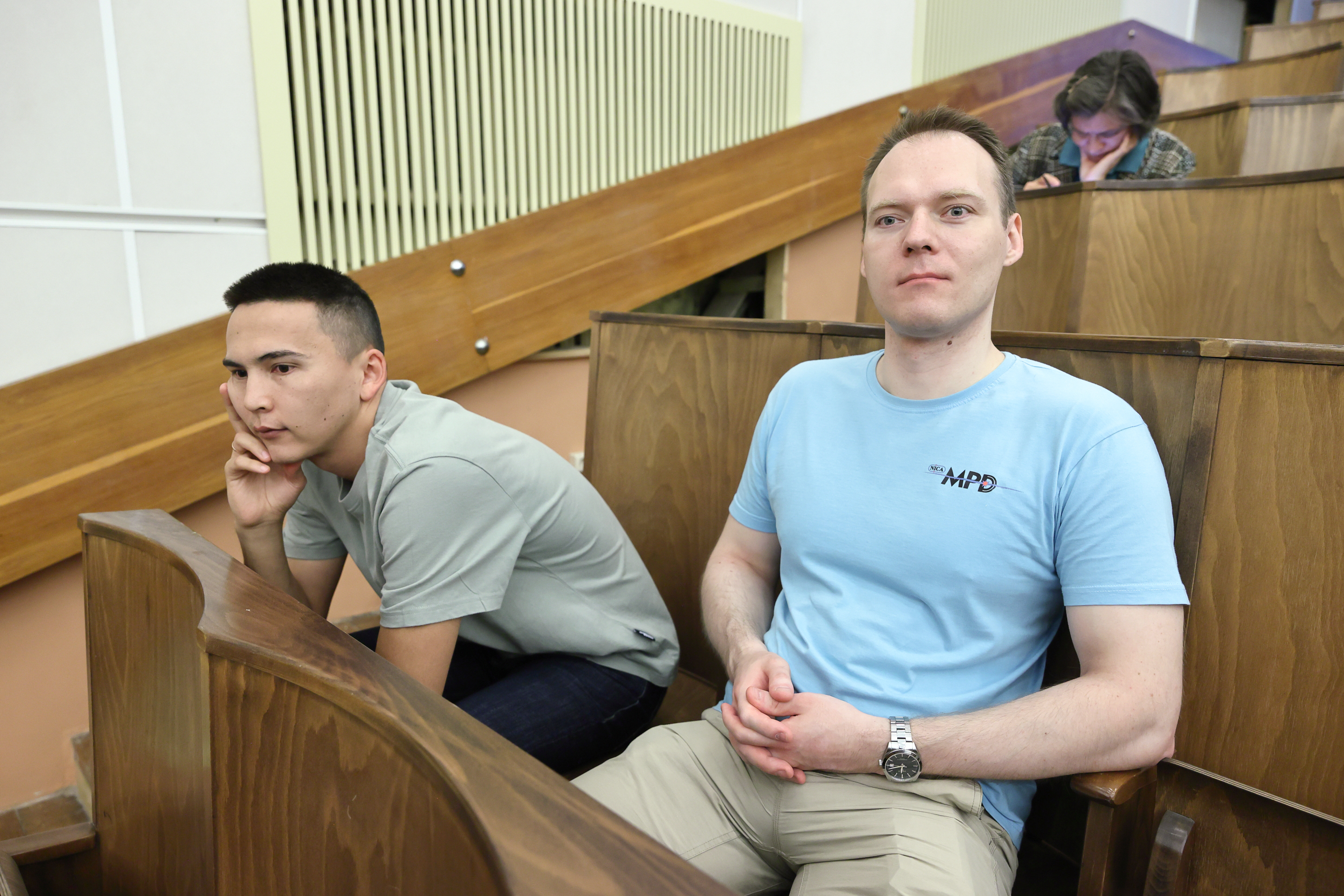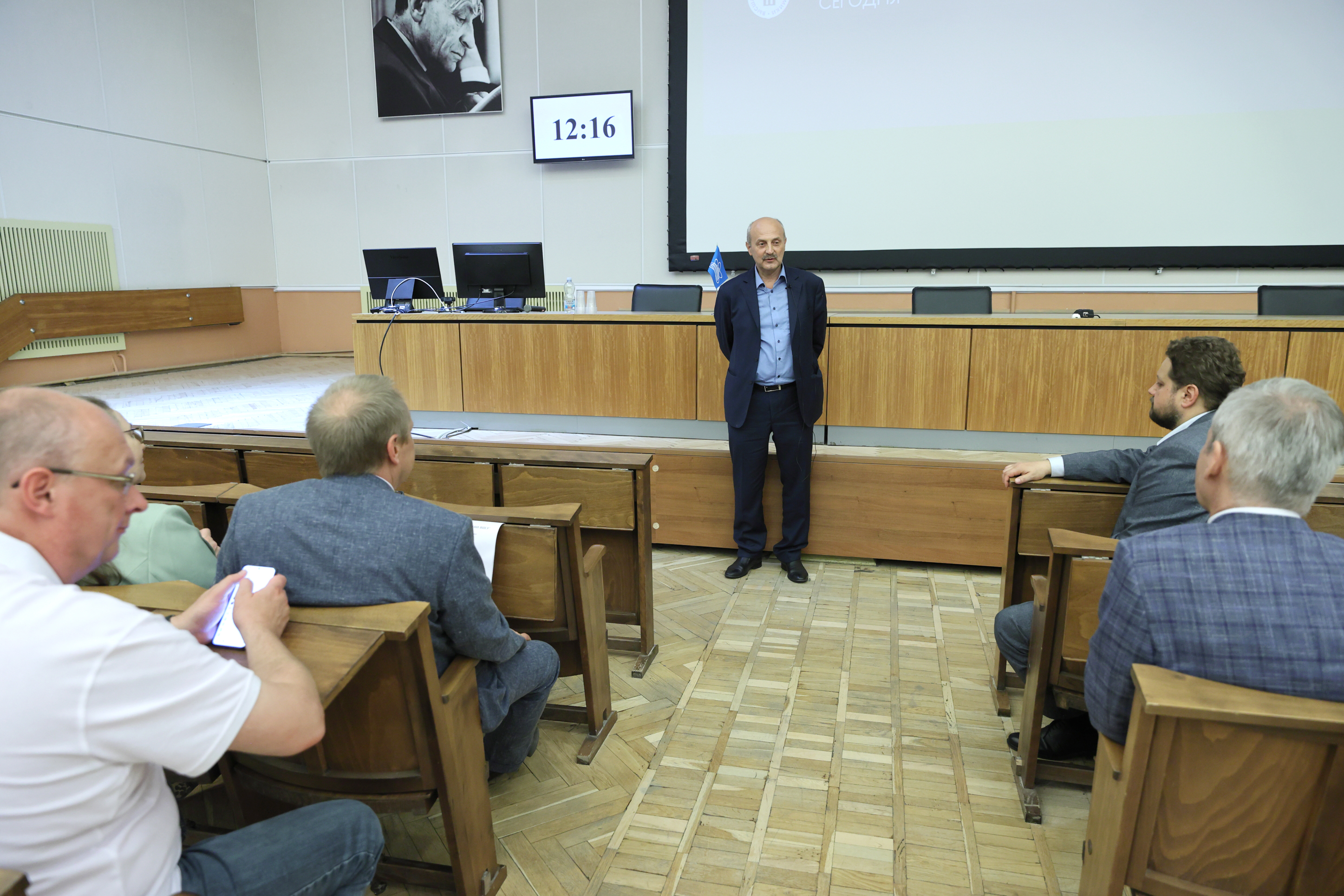JINR and HSE University discussed cooperation opportunities in NICA Project and personnel training
Media, 18 June 2024
The Joint Institute for Nuclear Research and the National Research University Higher School of Economics (HSE) signed a cooperation agreement in March 2024. The document defines the major areas of joint work, including participation in the experiments at the NICA Megascience Project, collaboration in theoretical and mathematical physics, information technology, and personnel training. On 14 June, JINR hosted the first JINR-HSE workshop, implementing this agreement.
The meeting included sections on the listed topics; another section was devoted to the social and humanitarian aspects of scientific discource. Acting Director of the Laboratory of High Energy Physics at JINR Andrey Butenko opened the plenary meeting and commented on the status of the NICA Megascience Project. “We set the bar high, even higher than anyone before. We compete on equal terms with the leading centres of the world in our field. It is obligatory for us to work in the same direction attracting new researchers: mathematicians, physicists. We will strengthen ties with your institute. Now the collider is being built, in a year the first data will appear. After that, the project will gradually snowball, so your participation in the project is mutually beneficial,” Andrey Butenko underlined.
JINR Chief Scientific Secretary Sergey Nedelko made a brief presentation about JINR. He highlighted that the Institute is one of the leaders among international intergovernmental scientific research organizations in terms of the scale, range and effectiveness of research, and the number of staff. Sergey Nedelko also noted that there is a huge potential for partnership between JINR and the HSE due to their multidisciplinarity and management features.
HSE Senior Director for Research and Development Alexey Sudarikov presented the structure and areas of work of Higher School of Economics, which is a large scientific and educational complex. “Two interdisciplinary research centres can generate a synergy, they can interact and find partners who will be mutually interested in joint work,” Alexey Sudarikov commented on the prospects of partnership.
Then several parallel sections devoted to possible JINR-HSE cooperation took place at the meeting. There were substantive discussions on scientific programme of the MPD, SPD, BM@N Experimental Collaborations at NICA, mathematical methods in life sciences, some aspects of modern mathematics and mathematical physics, IT development for storing and processing data from physics experiments. The participants discussed the opportunities for training of highly qualified scientific personnel, including organization of student practices and internships at JINR.
“It has been a long time since JINR and the HSE started to work together on the MPD, BM@N, and SPD Experiments of the NICA Project. The HSE research team, one of the strongest in this field in Russia, works on the application of machine learning in elementary particle physics. At the meeting we summed up current collaboration results and outlined areas for its future development”, JINR Deputy Chief Scientific Secretary Alexey Zhemchugov commented.
Sergey Shmatov, Director of the Laboratory of Information Technologies spoke about the section on the development of information technology for storing and processing data from physics experiments. The discussion was devoted to the aims of the NICA Project. Two main issues were raised: the management of the data processing and analysis, including optimisation of data streams and their storage, and algorithms and software for data reconstruction and analysis. A substantial part of the reports covered the use of AI methods for data processing and decision-making algorithms.
MLIT JINR employees presented reports on the JINR Multifunctional Information and Computing Complex, the development of the Govorun Supercomputer, including the GPU-component of the platform, methods and algorithms used at MLIT, machine learning and AI methods to determine the characteristics of the trajectory of charged particles. The HSE representatives shared their experience in creating infrastructure for using machine-learning models in software stacks of high energy physics and simulating physics processes on the supercomputer. “We analysed each other’s mutual interests, narrowed down areas for further discussions, and decided to hold several workshops at the HSE and MLIT at JINR concerning certain issues,” Sergei Shmatov highlighted.
In addition, MLIT specialists introduced the audience to the Laboratory’s programmes for students and invited the HSE to take part in conferences and IT School held by the Labotatory. “Ideally, it is necessary that during internships at JINR, students should not only perform the task assigned to them at the Institute, but continue to work on it with their research team upon returning to the university,” Sergei Shmatov emphasised.
Dmitry Kamanin, Director of the JINR University Centre made a presentation on the UC educational programmes during the discussion on the training of highly qualified scientific personnel at the section titled “Mathematical methods for life sciences”.
Speakers of both organizations made reports in representation theory and integrated models as part of the “Modern mathematics and mathematical physics” section. These rapidly developing research fields are not only the basics of contemporary mathematics and mathematical physics, they also have great practical value in high energy physics and condensed matter theory. In these areas, BLTP at JINR and the HSE Faculty of Mathematics will complement each other combining different approaches. “During the discussion, we defined intersection points of research programmes and outlined possible cooperation areas. The possible organization of such joint events in future was also discussed,” section curator, Senior Researcher at the Laboratory of Theoretical Physics at JINR Alexander Povolotsky, concluded.
There is a long-standing cooperation between JINR and the HSE in sociology, cultural studies, and history. In this collaboration, JINR serves as an interesting applied sociological research platform for humanities scientists from the HSE. HSE specialists also joined the work related to the creation of a new JINR museum and the formation of the museum’s archive. According to Alexey Zhemchugov, Deputy Chief Scientific Secretary of the Institute, the Museum of History of Science and Technology of JINR expects a very significant expansion in the near future. As for maintaining the archive, HSE specialists noted that a scientific organization with a 70-year history needs not only an official archive of documents, but also the creation of an archive of historically significant research artifacts, personal belongings, photographs, and the preservation of many other elements of the Institute’s cultural layer. The archives of Bruno Pontecorvo, Ilya Frank, Mikhail Meshcheryakov and other founding fathers are yet to be deciphered and digitised. “The HSE will provide a major scientific and methodological base for this work by supporting historical specialists working in the current JINR Museum,” Alexey Zhemchugov noted.
